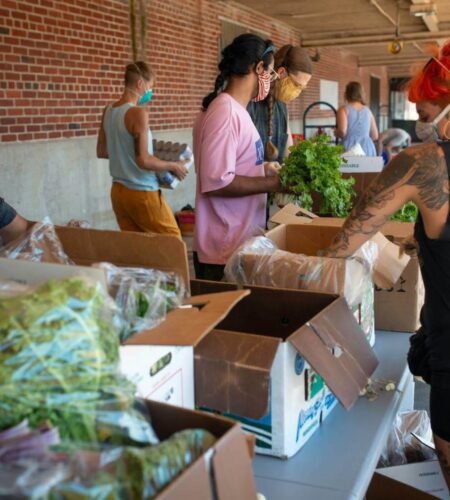The COVID-19 pandemic has been one of those seismic events that leave an indelible mark on society, reshaping everything it touches. As lockdowns, social distancing, and unprecedented uncertainty became our new reality, we were forced to rethink what it truly means to be part of a community. This global crisis pushed us to adapt to new norms and challenged our daily routines, leading to profound changes in how we interact, support each other, and define our sense of belonging. From the shift to remote work and virtual gatherings to a surge in community support and grassroots efforts, the pandemic unveiled a deeper understanding of our interdependence and revealed both the strengths and vulnerabilities within our communities.
Finding New Ways to Support Each Other
When the pandemic hit, it felt as though the world had abruptly hit pause. Daily routines were upended, and we quickly realized how crucial our local communities are to our well-being. Small businesses, from restaurants to local cafés, faced unprecedented challenges and had to pivot rapidly to provide essential services. Cafés that were once considered mere conveniences adapted to offer curbside pickup, delivery, and even emergency grocery supplies. This swift adaptation not only underscored their importance but also galvanized community support in extraordinary ways.
Neighbors stepped up, practicing mutual aid to bridge gaps in support. From dropping off COVID-19 test kits and essential supplies to those unable to leave their homes, acts of kindness became lifelines for many. Mutual aid networks flourished, with local groups organizing to provide groceries, medications, and other necessities to vulnerable members of the community.
Frontline workers, including healthcare professionals, grocery clerks, and delivery drivers, emerged as everyday heroes. Many local businesses contributed to their support by delivering meals and supplies directly to hospitals and clinics. Community members showed their gratitude in diverse ways: creating signs for windows and front yards, sharing supportive posts on social media with hashtags like #InThisTogether and #FrontlineHeroes, and participating in nightly applause. In New York City, residents came together each evening at 7 p.m. to cheer from their apartment windows, creating a chorus of appreciation that resonated through the streets.
These efforts not only provided practical support but also fostered a deep sense of solidarity. They highlighted the essential role of both individual and collective actions in sustaining our communities during challenging times.
Virtual Connections: A New Kind of Bond
With in-person interactions on hold, virtual communication tools became our lifeline. Platforms like Zoom, Skype, and social media transformed into our new meeting places. Video calls, which were once reserved for work, became the primary means for catching up with friends and family. Pets, kids, and the everyday realities of home life made these interactions feel more personal and less formal, offering a glimpse into each other’s worlds that we might not have seen before.
Surprisingly, these virtual connections had their perks. Studies revealed that increased digital communication helped ease feelings of loneliness and anxiety for many. Whether it was a quick text, a group chat, or a video call, staying connected virtually made us feel closer to those we couldn’t see in person. It served as a powerful reminder of the strength of our bonds, even when miles apart.
The Power of Local and Hyper-Local Efforts
The pandemic also ignited a resurgence in local and hyper-local community efforts. Neighborhoods rallied together in innovative ways, with mutual aid groups and local charities stepping up to fill gaps in support. Digital tools like Facebook groups and WhatsApp threads became essential for organizing help and keeping everyone informed.
These grassroots efforts showcased the strength of our local networks. From food distribution to health check-ins, these initiatives not only addressed immediate needs but also fostered a renewed sense of community. They broke down barriers and demonstrated that when we come together, we can make a significant impact.
However, the pandemic also highlighted significant disparities. Some communities struggled more than others, particularly those with limited access to technology or financial resources. This uneven support underscored the need for inclusivity, ensuring that everyone can be a part of the community.
Embracing Community in New Ways

As we move into a post-pandemic world, it’s clear that our sense of community has been irrevocably changed. Many of us have developed a deeper appreciation for local businesses and a stronger commitment to supporting our neighborhoods. We’ve learned that community is not just about physical proximity but also about how we come together, whether in person or online.
The pandemic has accelerated trends in virtual and micro-volunteering. More people, particularly younger individuals, are finding new ways to contribute through digital platforms. This shift has opened up new opportunities for engagement and support, blending traditional volunteer work with modern technology.
Looking Ahead: Building a Stronger Community
The COVID-19 pandemic has reshaped our understanding of community in profound ways. It has highlighted the importance of local connections and sparked new forms of engagement, while also exposing challenges and inequalities that need to be addressed.
As we look ahead, focusing on community can guide us in building a more inclusive and supportive future. We’ve learned that even in the toughest times, our local communities can be a source of strength and solidarity. By nurturing these connections, addressing gaps, and embracing new forms of engagement, we can create a more resilient and connected world.


